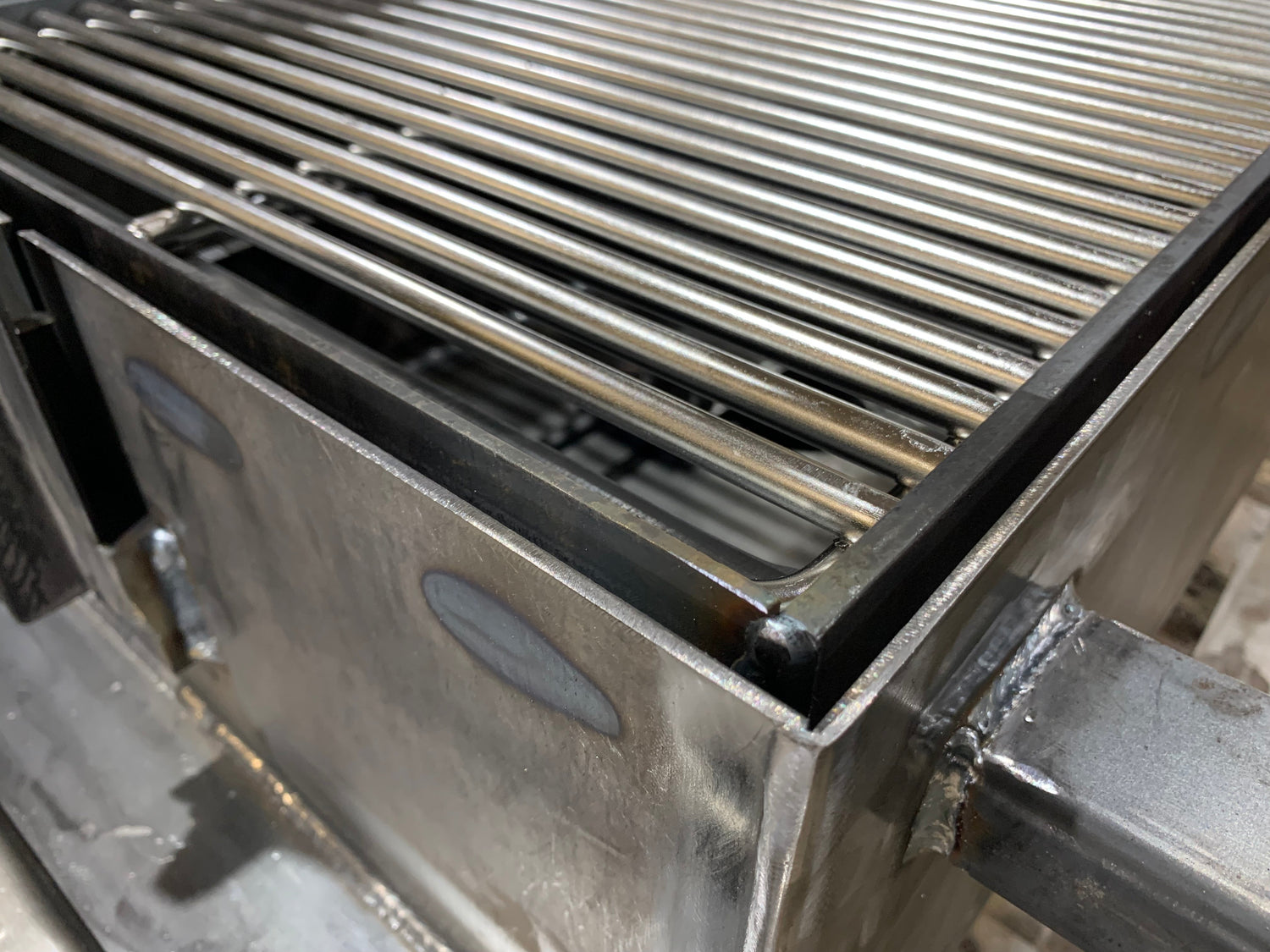I am amazed, more astonished, aghast perhaps, I have to still explain this in 2025. This was something I had to explain repeatably back 20 some years ago, then I thought it dissipated due to the grilling community being educated but it has since rearose. Background, I went to school for weld engineering. Which, I remember I was surprised this was a thing to discuss back then due to more people knowing how a wood heating stove worked. Maybe it's cyclical. I honestly have no idea where this thought arose.
Compared to other building material types, (i.e. glass, brick or wood) steel is an extremely poor thermal insulator. Steel does a very good job in conducting heat energy. We use it as a cooking pan as in we place a flame under it and the heat prorogates through the pan into the food. In reference to a wood heating stove, a fire is set inside and the heat is then conducted through the wall and radiated as infrared energy.
To be technical, A1011 carbon steel (the steel used in the 1000 and 2000 series) has a thermal conductivity of 89 watts per meter per Kelvin represented as W/MK. 304 stainless steel is 16.2 W/MK. Aluminum is 237 W/MK. Copper is 401 W/MK. Wood is .1 W/MK and glass is .5 W/MK. Firebrick is .1-.6 W/MK depending on the type of brick. Atmospheric air is .02 W/MK.
The thickness of the material does not change its thermal conductivity but items like cast iron pans have their thickness set to propagate the heat radially to where localized hot spots are transmitted radially.
Ok so what does this have to do with grills and bbq pits? There was (and I recently ran into it again) a fairytale that a thick steel grill would use less wood than a thin walled grill. This is immensely untrue. Being that steel is a very good thermal conductor (compared to materials like firebrick), like the cast iron pan, heat is conducted radially. The thicker the steel, the more radial conduction. Thermal energy will want to propagate through the steel before it gets emitted as infrared heat. However, in the case of wood burning stoves, grills and bbq pits, once the steel is heated the energy is conducted radially but is also transferred as infrared energy at 99.98% efficiency. The other .02% is conduction transfer through air.
So, wood or charcoal burning is putting out a set energy output. That energy output is in the form of conduction, convection and infrared. That thermal output needs to be transmitted to the food. However, it first needs to heat up the grill. The more steel in the grill the more thermal energy required. Meaning the thicker the grill, the bigger and hotter the fire. The thinner the grill the less amount of thermal input to heat up the grill.
But here's the crux of the matter. Material can only hold and transmit so much energy before they degrade. The steel in your grill needs to transfer the heat energy before it degrades or becomes reactive. Meaning melts or reacts to oxygen. So a thin grill is going to degrade faster than a thick one. But the thicker the material in a grill, the greater the energy to get warm enough to cook the food.
Also note 304 stainless steels thermal conductivity of 16.2 W/MK which is 1/5 the conductivity of A1011. Meaning comparing material of the same thickness, 304 stainless would need to be fives times thicker to transmit the same energy. Without the ability to transmit that energy, the material will reach it's critical temperature easier. The temperature we look for is 1100 degrees Fahrenheit or 593 Celsius. The temperature of a charcoal fire. At 450°C, 304 stainless begins chromium carbide precipitation and intergranular corrosion. Meaning it will lose it's properties that make it 304 stainless. Critical temperature of A1011 carbon steel is 482°C but is most noticeable at 1000°C or 1832°F. Which is why (and I've had people question me about this for decades) their stainless steel grill burns out. Stainless steel would have to be built much thicker to be as tough as steel in a grill. But please don't misunderstand that 304 stainless definitely has it's place in cooking. And if you want to look up 316 stainless, Just Google 316 stainless critical temperature. Oh and it's Inconel 718 that's used for jet engine nozzles. But you're not going to want to pay to use that as a grill.
And ladies and gentlemen, that is why I came up with using 10 gauge carbon steel (.13" or 3.4mm) of the 1000 series. It's a very happy medium. Thick enough to withstand localized hotspots and material degradation but thin enough that it doesn't take a very hot and large fire to get warm.
The old schoolers were indeed correct after all.
Cheers,
Chris


0 comments